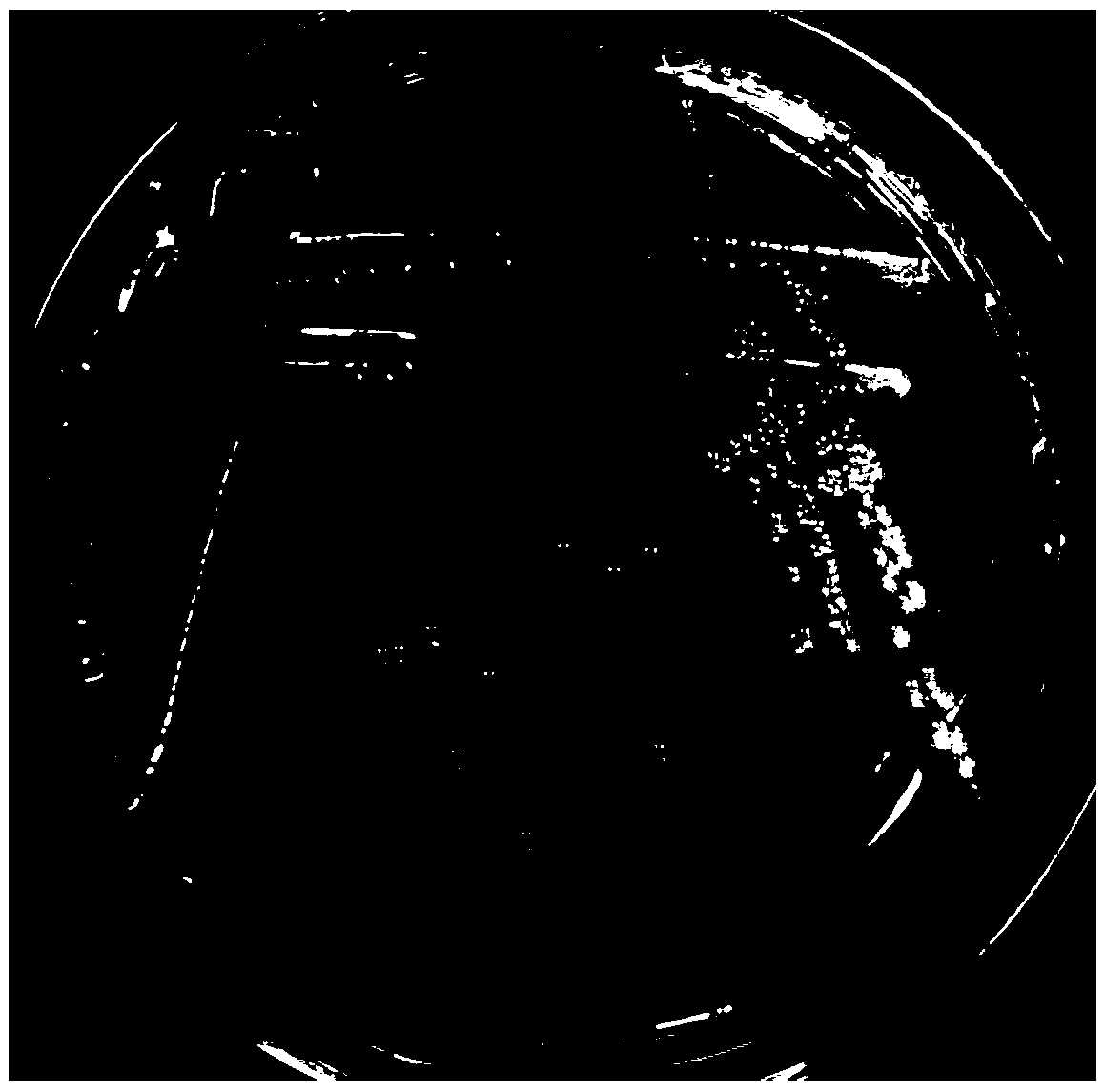Rhodotorula mucilaginosa DJHN070401 with high antimony resistance as well as separation screening method and application thereof
A technology of high antimony-resistant glue and yeast, which is applied in the field of microorganisms, can solve the problems of antimony-resistant microorganism screening, few identification methods, and weak related technologies, so as to reduce antimony toxicity and ecological hazards, good tolerance performance, and good antimony resistance performance effect
- Summary
- Abstract
- Description
- Claims
- Application Information
AI Technical Summary
Problems solved by technology
Method used
Image
Examples
Embodiment 1
[0026] Example 1 Isolation and screening of Rhodotorula gum DJHN070401
[0027] The Rhodotorula japonicum of the present invention has a genus name of Rhodotorula, a species name of mucilaginosa, and a strain name of DJHN070401. The strain is isolated and screened from agricultural soil near the North Mine Smelter in Xikuangshan, Hunan, specifically through plate resistance screening. The screening method belongs to routine experimental methods in the art. The specific method and process are described as follows:
[0028] Take 10g of the soil sample to be tested, add it to a conical flask filled with 90mL of sterile water, stir it on a magnetic stirrer for 30min, let the strains be fully eluted from the soil sample, and let it stand for 20min; then take 1mL of the supernatant Add it to the improved 9K liquid medium (Wang Shuguang, Xu Zhe, Luo Pengcheng. An improved 9K solid medium preparation method [P].201510671854.7.), and cultivate in a shaker at 30°C and 150rpm for 1 to 2...
Embodiment 2
[0032] Molecular Identification of Example 2 Rhodotorula japonicus DJHN070401
[0033] In this example, the Rhodotorula glucosa DJHN070401 of the present invention was tested and analyzed through the 18S rRNA sequence, 26S rRNA sequence and ITS sequence respectively.
[0034] 2.1 Determination and analysis of 18S rRNA sequence of Rhodotorula gum DJHN070401
[0035]DNA extraction from fungi: Take an appropriate amount of bacterial samples and centrifuge at 8000r / m for 10min, discard the supernatant; add 100μl STEs to resuspend; add 80μl glass beads (diameter 0.1-0.2mm), add 40μl TE (pH=8.0) to each tube; add 120μl PCI (phenol:chloroform:isoamyl alcohol=25:24:1); vortex for 10min; centrifuge at 12000r / m for 10min, take the upper aqueous phase into a new EP tube, add an equal volume of isopropanol, and then add 1 / 5 volume NaAc; Precipitate at -20°C for 15 minutes, centrifuge at 12,000 r / m at 4°C for 10 minutes; discard the supernatant, fully dry the DNA in air at 37°C, dissolve ...
Embodiment 3
[0062] Example 3 Antimony Performance Test of Rhodotorula japonicus DJHN070401
[0063] The isolated pure culture strain was inoculated into 100 mL of 9K liquid medium, and cultured with shaking at 30°C overnight. Dilute the bacterial concentration to 10 -2 After that, take 60 μL and apply it to solids with Sb(Ⅴ) concentrations of 100, 200, 300, 500, 750, 1 000 mg / L and Sb(Ⅲ) concentrations of 50, 100, 150, 200, 300, 400, 500 mg / L in sequence. On the medium plate, make 3 parallel plates for each antimony concentration gradient. After culturing at a constant temperature of 30°C for 3 days, the growth of the colony was observed. The results showed that the isolated pure culture strains were able to grow on solid medium plates with Sb(Ⅴ) concentrations of 100, 200, 300, 500, and 750 mg / L respectively, but colonies on solid medium plates with 750 mg / L The number decreased significantly, indicating that the concentration of Sb(Ⅴ) was 750mg / L, which was close to the limit concent...
PUM
| Property | Measurement | Unit |
|---|---|---|
| diameter | aaaaa | aaaaa |
Abstract
Description
Claims
Application Information
 Login to View More
Login to View More - R&D
- Intellectual Property
- Life Sciences
- Materials
- Tech Scout
- Unparalleled Data Quality
- Higher Quality Content
- 60% Fewer Hallucinations
Browse by: Latest US Patents, China's latest patents, Technical Efficacy Thesaurus, Application Domain, Technology Topic, Popular Technical Reports.
© 2025 PatSnap. All rights reserved.Legal|Privacy policy|Modern Slavery Act Transparency Statement|Sitemap|About US| Contact US: help@patsnap.com



